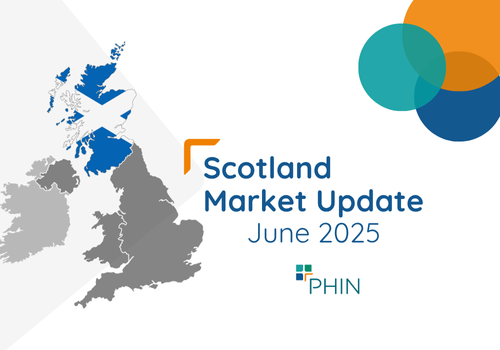In the latest of our quarterly updates, we use our unique, national dataset to provide a comprehensive view of the key trends in the independent healthcare sector in Scotland up to, and including, the end of 2024.
Private healthcare sector market activity
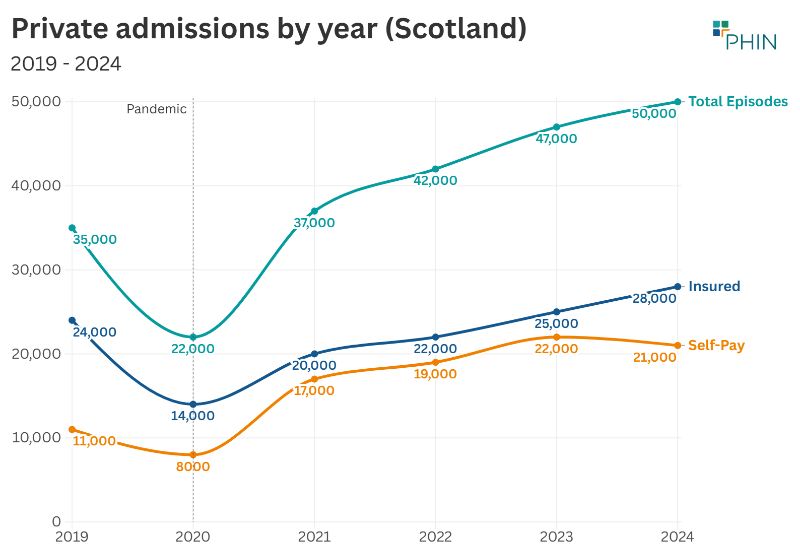
At a glance
Changes from 2023 to 2024 in Scotland:
- Reported private hospital/clinic admissions were up 6%.
- Private medical insurance admissions were up 11% to new record level.
- Self-pay admissions reduced very slightly but was second highest year on record and remain at near the joint highest annual total. Fourth consecutive year of growth in total and insured admissions.
Changes from 2019 (pre-pandemic) to 2024 in Scotland:
- Private admissions up 42%.
- Insured admissions up 92% and self-pay up 92%.
%20@2x%20Scotland.png)
Record independent healthcare in-patient admissions in 2024
The total number of admissions in 2024 was 50,000 (6% above 2023) meaning the private sector in Scotland had more admissions than in any previous year on record for the fourth year in a row.
Every quarter 2024 had a record number of admissions compared to the equivalent quarters in previous years.
The 6% increase in admissions in Scotland (+2,700 admissions) was matched in Wales (+1,900) and higher than England (3%), although England had a higher volume increase. At 12% Northern Ireland had the highest percentage increase of any nation.
%20Scotland.png)
Private medical insurance funded admissions driving growth, but self-pay funded admissions still high
Insured admissions
Admissions funded by private medical insurance were higher in every quarter than in any previous period, leading to a record annual figure (7,200 admissions).
There were 3,000 more insured admissions than in 2023 (11% increase).
Self-pay admissions
Self-pay admissions in 2024 remained very similar to 2023. In Q2 (Apr to June) 2024, there were more self-pay funded admissions in Scotland than in any other quarter.
Self-pay admissions are down across most of the UK, with only London and Wales seeing increases.
The proportion of admissions funded by insurance or self-pay has varied over the years, but 2024 was the first time in five years that the insured proportion has increased.
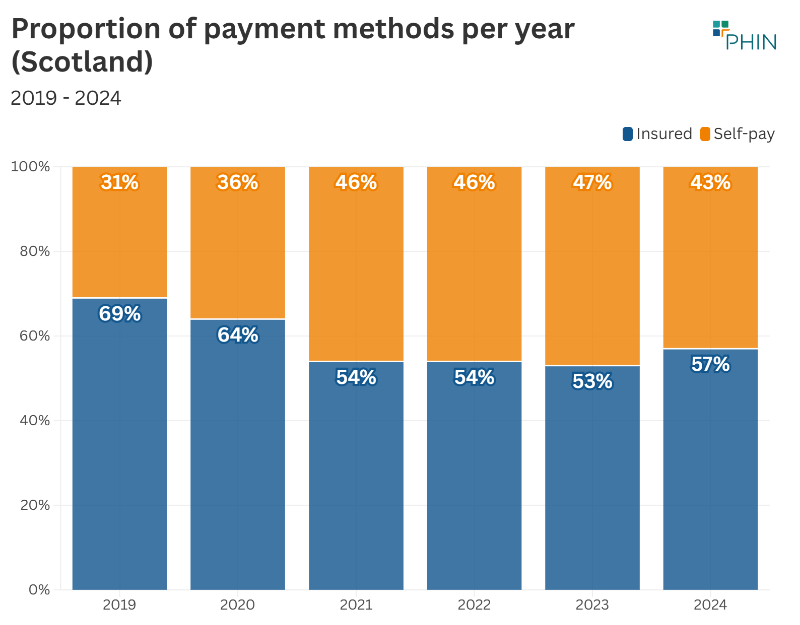
Top 10 procedures Scotland
The number of admissions increased in five of the Top 10 most popular procedures, but fell in the other five. The highest rise in admissions was for ‘Upper GI endoscopy - diagnostic’ at over 17%. There was an increase of 300 in the number of admissions.
‘Knee replacement (primary) fell by the highest percentage (12%). However robotic knee replacements (primary) increased by 230 admissions (82%).
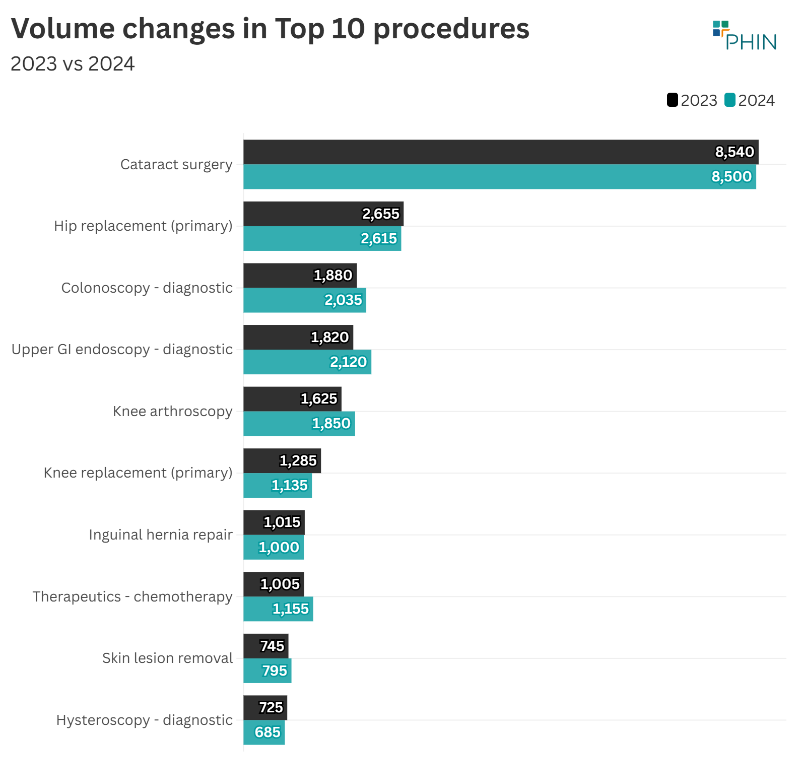
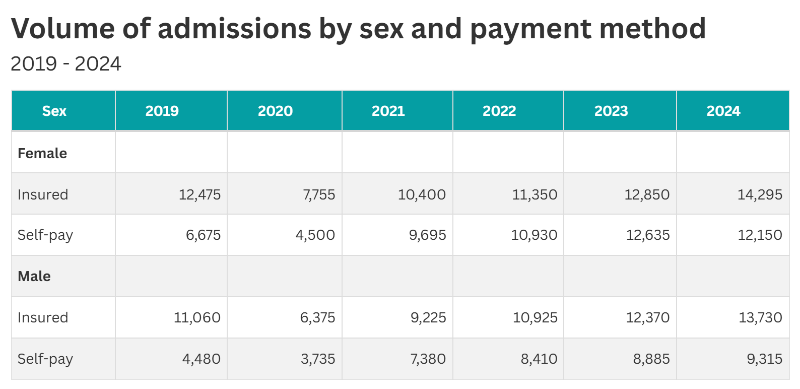
%20NI@2x%20Scotland.png)
@2x.png)
The number of consultants active in private healthcare regularly fluctuates as new consultants start working in the private sector, and existing ones go on sabbatical, stop working privately, or retire. The number of active consultants in Scotland in 2024 has increased over the past three years and 2024 was at the highest level ever recorded (7% higher than 2023).
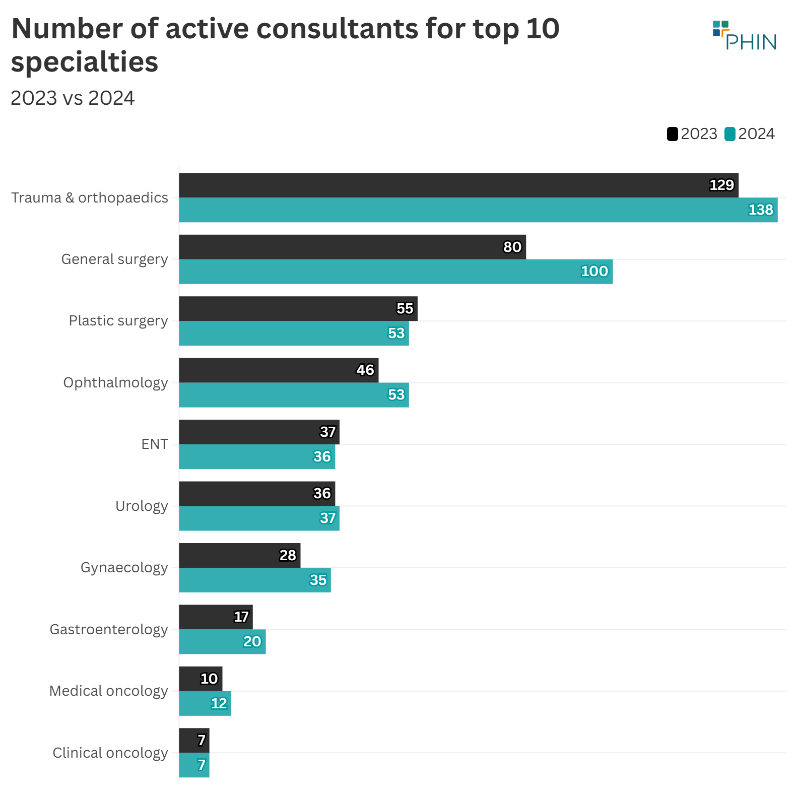
The largest volume and percentage increase in active consultants in the top 10 procedure groups in 2024 was in ‘General surgery’ with an extra 20 consultants (25%). There were 100 consultants working in this specialty in Scotland. This is 18% of the total consultants working in the private sector in Scotland.
The number of consultants working in ‘Gynaecology’ also increased by 25% with an extra seven operating in 2024.
Patient demographics
Payment method
There was an increased number of insured admissions for both sexes in 2024 compared to 2023. Insured funded admissions for both sexes increased by 11%.
Female self-pay funded admissions fell 4% while male admissions were up 5%.
Volume of admissions by age
There was an increase in admissions in all age groups up to 90 to 99 in 2024 compared to the previous year. The largest volume increase was in the 50 to 59 and 60 to 69 age groups (490) followed by the 70 to 79 age group (485).
The largest percentage increase (51%) came for patients aged 0 to 9 and second largest (12%) for those aged 10 to 19.
@2x.png)
Important notes
All data described above taken from PHIN’s unique, national private dataset describing discharge activity (day case and inpatient). This excludes activity outside of PHIN’s mandate from the Competition and Markets Authority, such as outpatient diagnostics, physiotherapy and mental health services.
There is a time lag between collecting, validating and processing the data we receive from hospitals before we can publish it. This can be up to 6 months after treatment has been completed, to ensure a fair process and accurate data.
Activity numbers have been rounded to the nearest 5, with percentage based on the unrounded figures.
